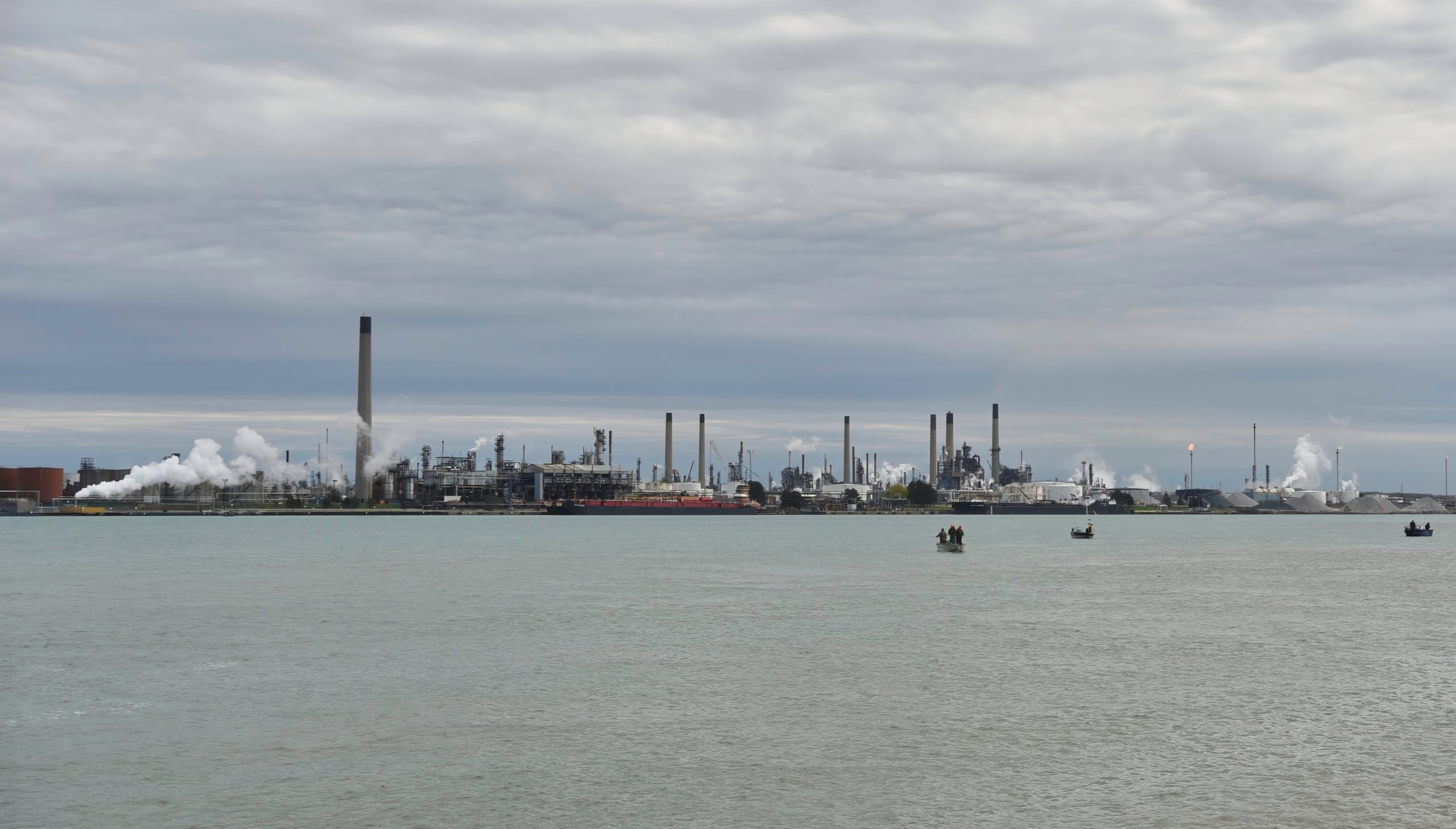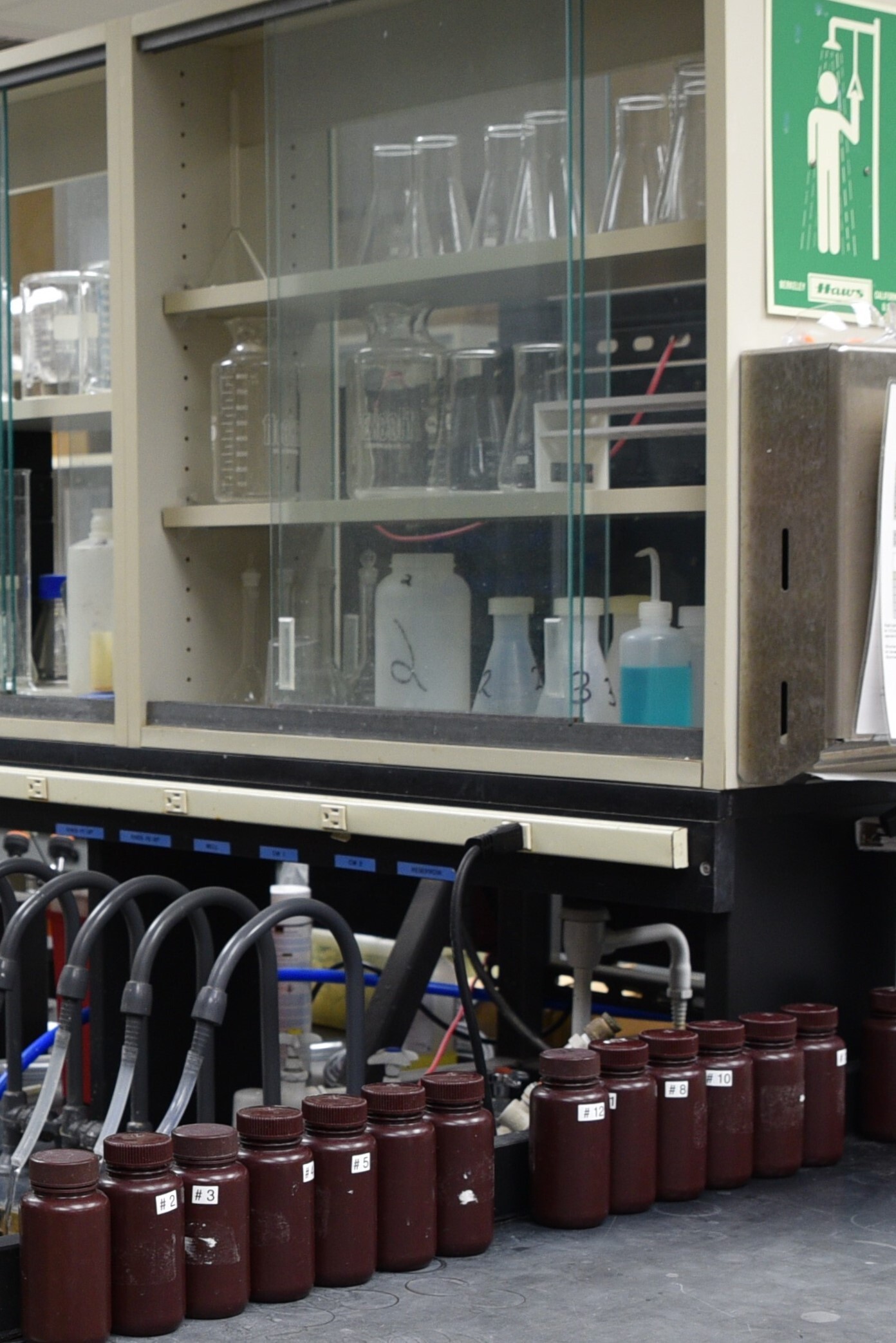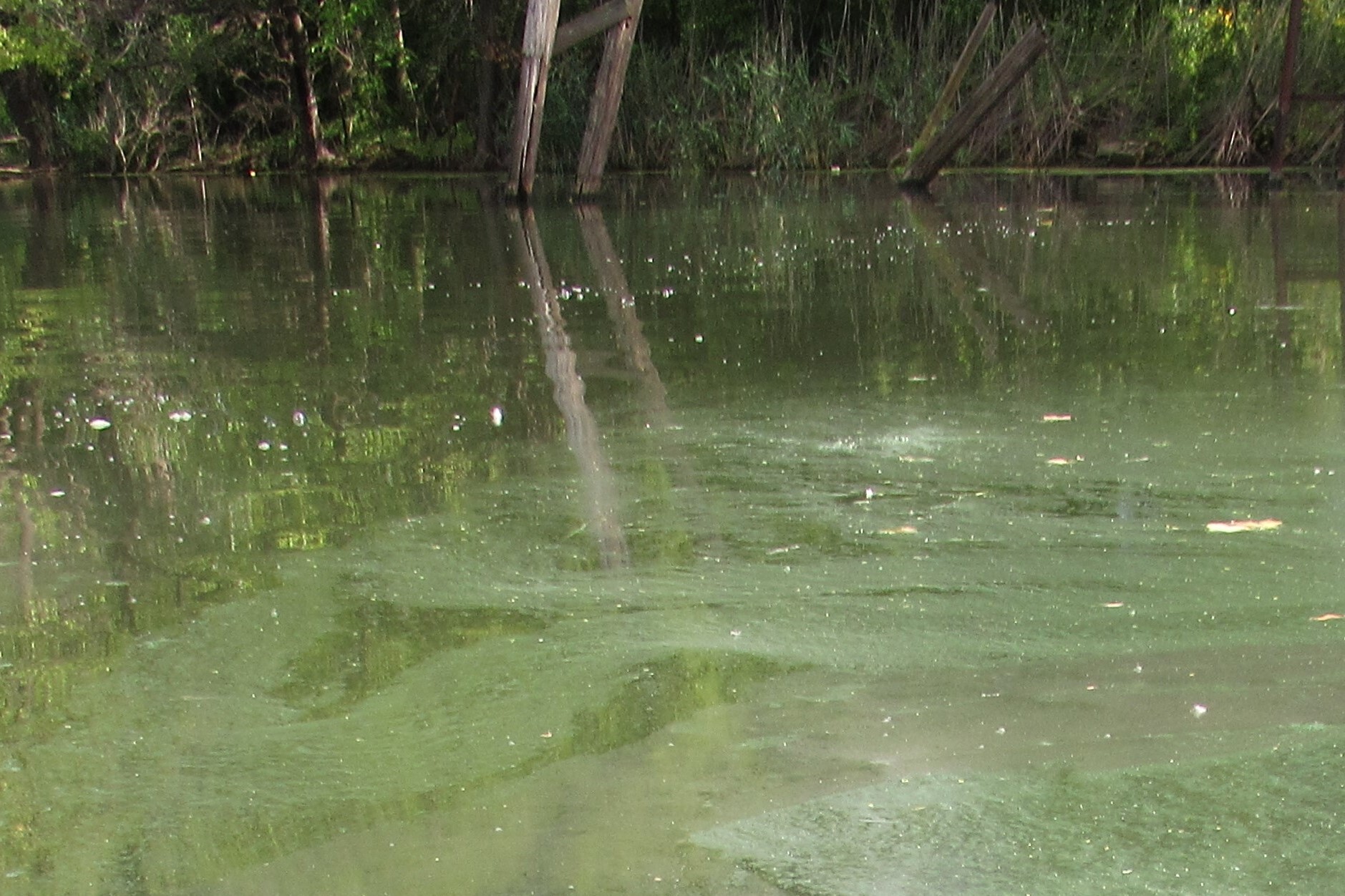
By Lester Graham, Michigan Radio
The Great Lakes News Collaborative includes Bridge Michigan; Circle of Blue; Great Lakes Now at Detroit Public Television; and Michigan Radio, Michigan’s NPR News Leader; who work together to bring audiences news and information about the impact of climate change, pollution, and aging infrastructure on the Great Lakes and drinking water. This independent journalism is supported by the Charles Stewart Mott Foundation. Find all the work HERE.
All the things that go down the drain and end up at the waste water treatment plant are not removed there. Some of the industrial byproducts that end up in sewers, the agricultural chemicals that runoff farmland, and pharmaceuticals that pass through our bodies all can end up in our streams and lakes. It’s a soup of chemicals. They’re difficult to keep out of drinking water.
Water treatment plants do a good job of killing the viruses and bacteria that cause waterborne diseases such as typhoid, cholera, and dysentery. There are some rare reports of pathogens such as cryptosporidium and legionella making people sick- or worse.
But dealing with chemicals seems more complicated for regulators. Only recently PFAS was discovered in drinking water, but it had been there for decades. More than likely there are other chemicals not yet detected.

A row of bottles for sampling the several sources of water coming into the Ann Arbor water treatment plant. (Photo Credit: Lester Graham/Michigan Radio)
Chemicals in water can mix. That’s where dealing with pollutants really falls short.
“The way the chemicals in general are evaluated is based upon a single chemical, and that just isn’t reality, we’re all exposed to multiple chemicals all of the time,” said Linda Birnbaum, a former director of the National Institute of Environmental Health Sciences as well as the National Toxicology Program.
While that’s well known by scientists, they don’t have the research facilities and money necessary to study what the complex mixtures of chemicals do to human health.
“We have an increase in autism spectrum disorder. We have an increase in ADHD. Those are both neurodevelopmental issues. We have an increase in autoimmunity. You know, there’s increases, say, in certain kinds of cancer like pancreatic cancer,” Birnbaum said.
Those increases are – at this point – unexplained.
The Environmental Working Group did a peer-reviewed study to estimate whether the chemical levels that don’t exceed government limits in drinking water could combine to cause increased health risks.
“Even at legal limits, we’re seeing, you know, a hundred thousand potential lifetime cancer cases could be related to drinking water contaminants as they are in the water today,” said Sidney Evans, an author of the study published in the journal Heliyon.
Evans says very little is being done to tackle all the possible combinations of chemicals in any meaningful way.
“And there’s a huge cost of inaction. It’s just hidden so most people can’t see it up front.”
She says the cost of researching all the possible combinations of contaminants would be daunting to say the least and incredibly expensive. So is the cost in human health and the medical costs in trying to treat those people.

Cyanobacteria blooms are fed by nutrient runoff from farm fields, golf courses, and yards. Their toxins can threaten drinking water safety. (Photo Credit: Lester Graham/Michigan Radio)
The U.S. Environmental Protection Agency and water treatment plant operators do participate in a program called the Unregulated Contaminant Monitoring Rule. They look at a list of chemicals every five years to see if they’re in drinking water and if so how prevalent they are. They start with a list of hundreds of suggested chemicals and then start narrowing it down.
“Sometimes we have things that land on the list and we just can’t develop a good method to be able to detect it reliably and then also prioritizing by what we think is most likely to be most prevalent. Right. We want to get to the things that are the most risk,” explained Jaime Fleming who runs the City of Wyoming’s water purification plant and waste water treatment plant. She and her colleagues across the nation are working to see whether certain individual chemicals are a problem.
But they don’t look at more than 30 individual chemicals in each five year period. And they don’t look at combinations of chemicals that are often known to be in drinking water.
Fleming says the goal is to keep individual chemicals out of the water to begin with so they are not part of that chemical soup.
“We look at drinking water, wastewater, other pieces of the environmental puzzle as individual pieces. They are really interrelated and the best way to protect your drinking water is to prevent something from entering it in the first place.”
Linda Birnbaum says the current process of looking at one chemical at a time is slow. And the rules protect companies until their chemicals are proven to be a significant risk. Even then, getting companies to stop manufacturing a chemical and then getting it to clean up the chemical are two very different things.

Foam on the Rogue River at Rockford is a tell-tale sign of PFAS contamination. (Photo Credit: Lester Graham/Michigan Radio)
“I think that the only way we can reduce exposures, we need better regulation and in some cases that may mean that we need new laws,” Birnbaum said.
But until that happens, what can you do to protect you and your family?
Sidney Evans with the Environmental Working Group says she loves that question and she hates that question. The answer is: filter your tap water at home.
Evans says that’s not equitable in an era when water affordability is increasingly burdensome to people with lower incomes.
“By expecting everyone to take their water quality into their own hands, we’re creating safe drinking water as a privilege for those who can afford it or those who are educated enough to know about the contaminants present their water and to know that they’re leading to those risks. That doesn’t sit well with me.”
The other choice is to shift the burden of keeping chemicals out of the water onto the manufacturers and users of those chemicals. That’s something political leaders have not been willing to do.
Catch more news on Great Lakes Now:
Raining PFAS: Amount of PFAS found is outpacing legacy contaminants
Good News for Lake Erie: 2021 algal bloom severity forecast is a low 3
API key not valid. Please pass a valid API key.Featured image: Chemical Valley in Sarnia, Ontario, sits on the St. Clair River upstream of drinking water intakes for several Detroit metropolitan municipalities. (Photo Credit: Lester Graham/Michigan Radio)




